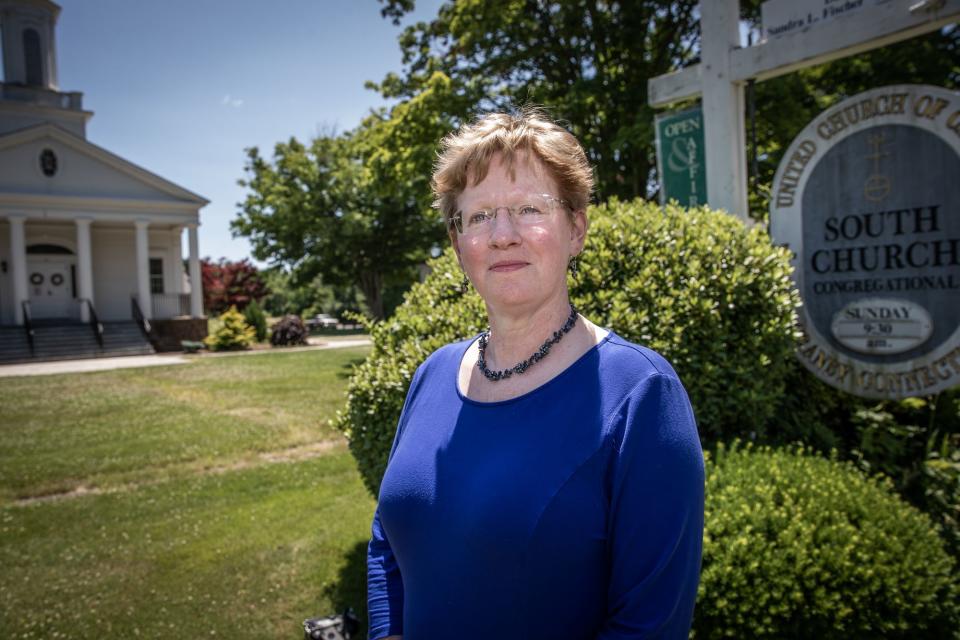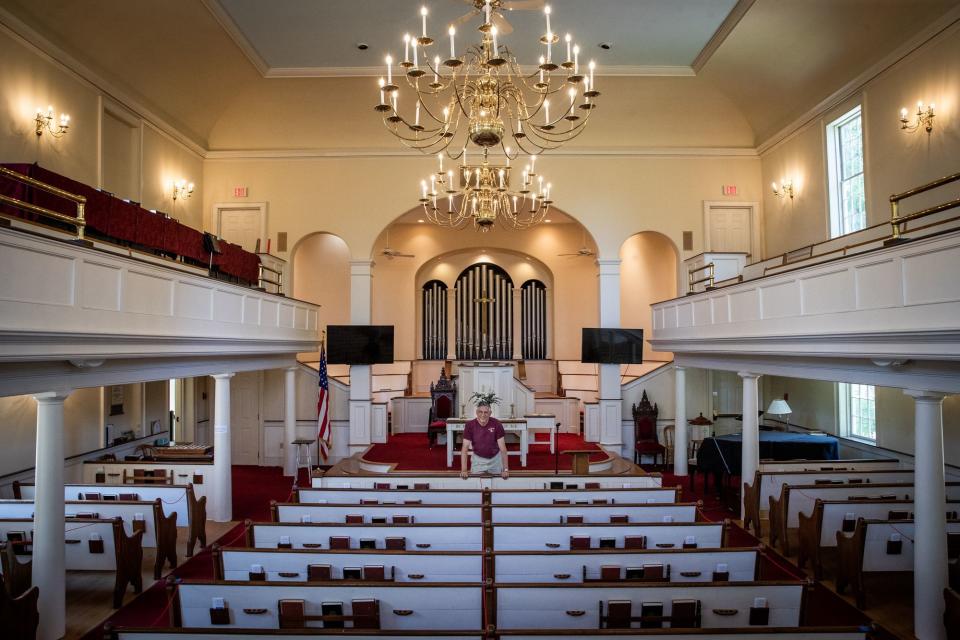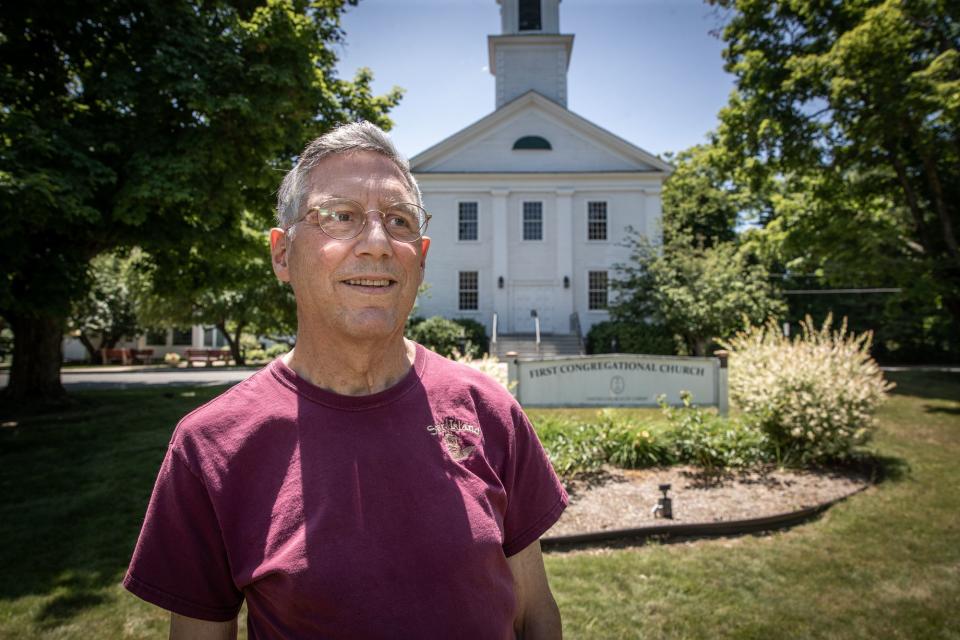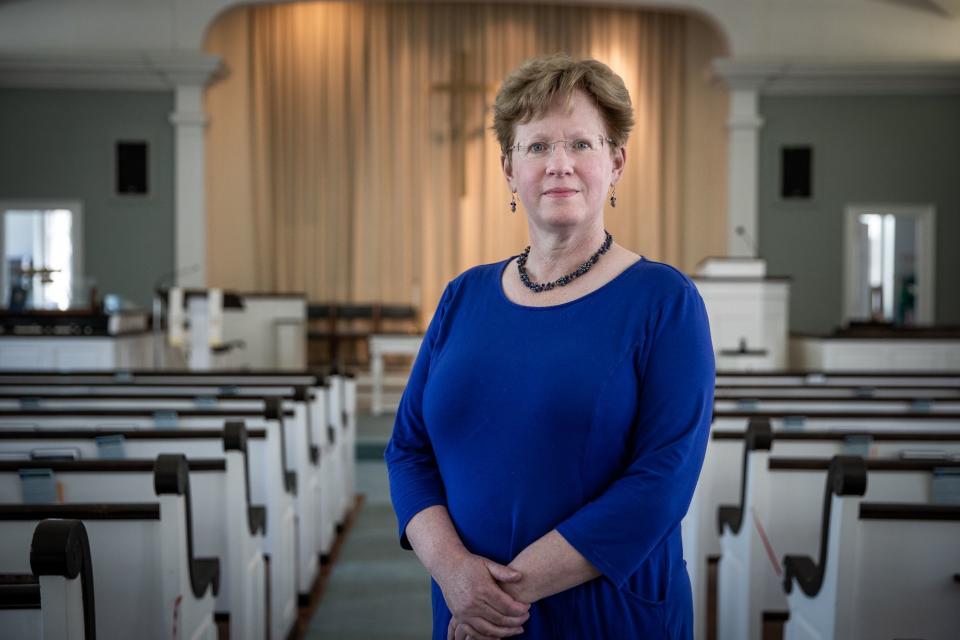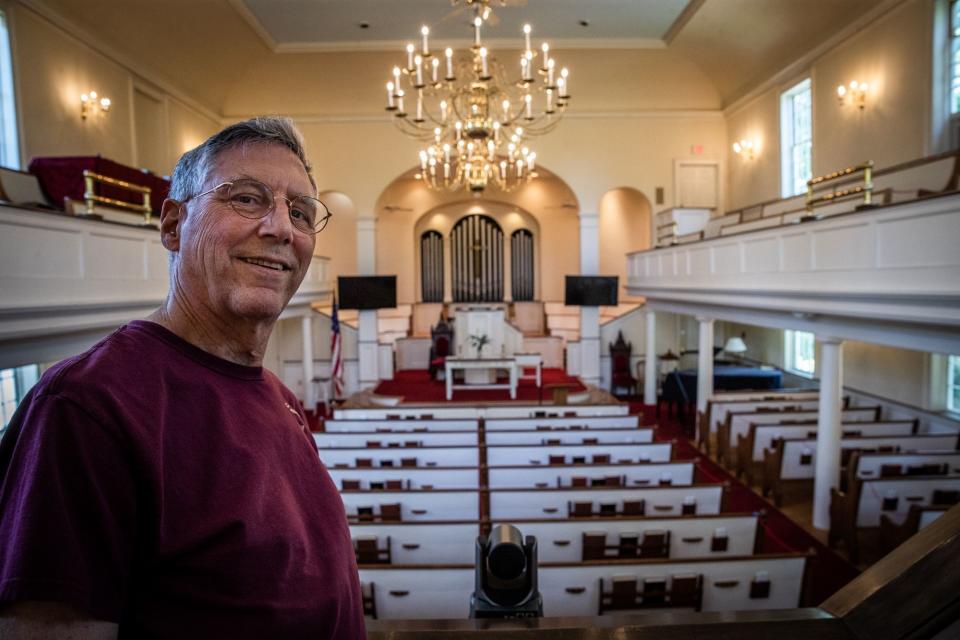Two Granby churches reunite after 150 years apart. They did it in a ‘very careful, thoughtful and strategic way.’
After 150 years of separation, two congregations in Granby are coming back together to counter diminishing church attendance and financial resources in Connecticut’s changing religious landscape.
The parishioners of First Congregational Church and South Congregational Church in Granby are careful not to refer to their move as a merger. They call it a reunion.
About 100 First Church members and 150 South Church members voted last month to form a new United Church of Christ congregation. This resolution has been discussed for nearly five years after both churches experienced a declining number of Sunday worshipers.
Bob Giles has been a member of First Church for more than 40 years and serves as the congregation’s moderator.
“We’re two congregations, but in many ways we’re a new church start,” Giles said. “I think the biggest challenge is to say, ‘OK, how do we decide how we’re going to grow in the future, and how do we reach out in different ways to a community and a society who doesn’t see church the way it’s been seen in the past?”
Giles said that both congregations are excited to embark on this next chapter of finding a new name and clergy, as well as solidifying how the church will operate going into the future. The reunited church hopes to have its legal and constitutional by-laws completed by September, he said.
“Granby’s not a big town. We’ve known each other many of us for a long time, and it’s been a real joy to see people coming together and excited about this,” Giles said. “Churches around the country and around the world are facing what we’re facing as far as declining membership and so forth. This is one example of two churches who took that task on and came up with a solution that we hope it’s going to be something really great going forward.”
First Church was founded in 1732 in the geographical center of Granby. In 1872, a group of congregants and the then-minister left First Church to create South Church in Granby’s business center. Factors driving the split may have also included a difference of opinion regarding the second wave of the temperance movement and horse racing.
Becky Sielman is the moderator of South Church and has been a member for 35 years. She said that the ideological differences that drove the split in the 1800s have disappeared in the 21st century. Today, both churches have the same spiritual background and are open and affirming, meaning that they welcome all people regardless of sexuality or gender identity.
“As we had conversations with one another, we realized that while once upon a time, there may have been differences in culture or style between the two congregations, there really are no differences today,” Sielman said. “You can’t find differences between a member of South Congregational Church, and First Congregational Church.”
Sielman said that the United Church of Christ is unique among other denominations in that congregations make all decisions about their church from the bottom up. Sielman explained that the decision to reunite was critical for the future of both congregations.
“We were very conscious that we were making maybe the most important decision in the last hundred-fifty years, since the decision was made to split off. And we were making this decision thinking not so much about ourselves, but our children and our grandchildren and our great-grandchildren, and people who will live in Granby that we haven’t met yet,” Sielman said.
A national trend
Over the last two decades, churches of all denominations have experienced shrinking congregations. According to the Faith Communities Today survey of more than 15,000 religious communities across the country, the median attendance at worship services was 137 in 2000. Over 20 years, that number was slashed by more than half — in 2020, median worship attendance was just 65 per congregation.
At the same time, studies have found that the country’s churchgoing population is aging. In 1998, the National Congregations Study by Duke University documented that in the average congregation, 29% of parishioners were 60 or older. In 2019, 43% were 60 or older, and only 24% of worshipers were younger than 35.
The Rev. Sandra Fischer was a member of First Church when she felt called to enter the ministry. After graduating from Yale Divinity School in 2012, she became South Church’s associate minister. In 2020 she completed her doctorate in congregation collaboration and merger and now runs a consulting business for churches looking to collaborate or combine with other ministries.
“I can say that the Northeast has had the steepest decline in church affiliation,” Fischer said.
“There’s all sorts of things that are going on, but I think the real driver is that there is a steep decline in the participation of younger generations in organized congregational life across all denominations. I mean, you’ve heard of the ‘spiritual, not religious’ terminology. Each generation seems to be less interested in being involved in a structured congregational life as opposed to finding their own path to their own spiritual fulfillment.”
Fischer explained that another factor driving low attendance is the large array of church choices for Christians. According to the Association of Religion Data Archives, there are more than 20 Christian congregations within a 6-mile radius of Granby’s town center.
“There’s such a wide range of choice, and there’s a small amount of people that are interested in going to church, so it really just divides the impact,” Fischer said. “In many of these churches that are declining, these faithful people, [who are] trying their best, think it’s their fault. Churches are not aware that this is a 20-year national trend that they are being swept along by. And so I think that there is guilt and grief and loss in many, many, many of these congregations.”
Fischer said that preserving these churches is also key to preserving town livelihoods. From providing a location for preschools or alcohol and addiction anonymous meetings, to collection drives for local food pantries or shelters for people experiencing homelessness, church impact extends beyond those who attend Sunday worship.
“Whether or not you go through the front door of that white UCC Church in the center of town or not, your daily life and the nature of the town in which you live is directly impacted by its presence in ways that most people don’t know or understand,” Fischer said.
Sielman said that she hopes the reunification between First and South Church will be a success story for other Connecticut congregations to look at.
“There is a lot that can be said about congregations with dwindling size and resources and the challenges they face,” Sielman said. “We’re hoping to be a maybe somewhat rare but happy ending. And we hope also that the very careful, thoughtful and strategic way in which we approach the situation will provide a roadmap for other congregations that need to consider changes in order to continue to be viable going forward.
“I don’t think that there is any less of a need in the population for something spiritual in people’s lives. But I don’t think people are looking to meet that need in the same way they used to. So it’s up to us to figure out how we can provide that spiritual presence in new ways.”
